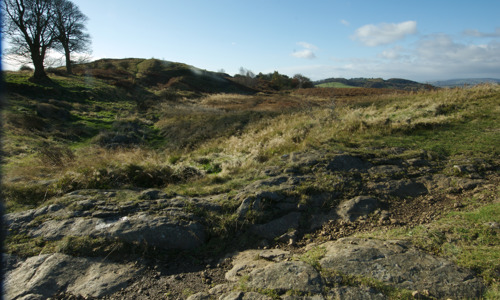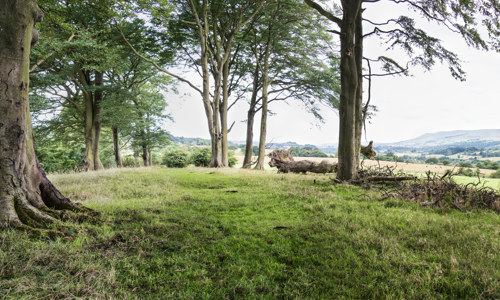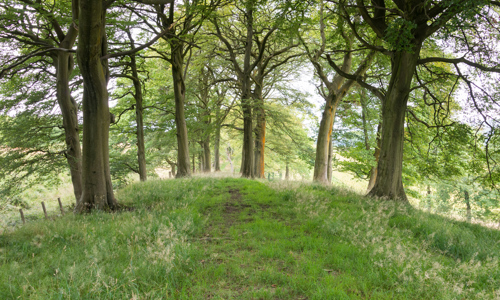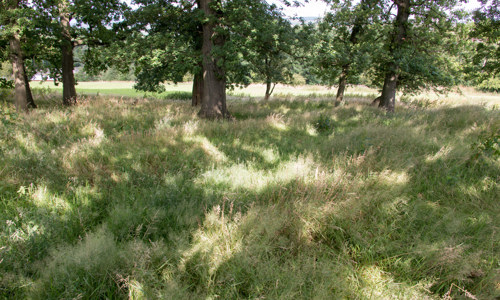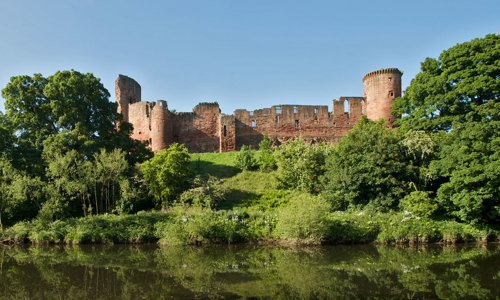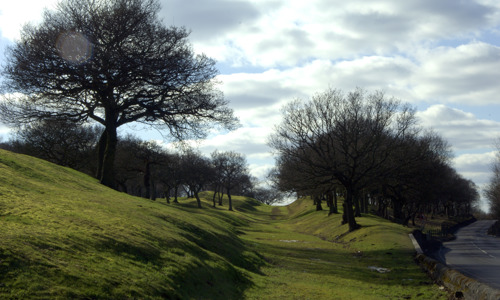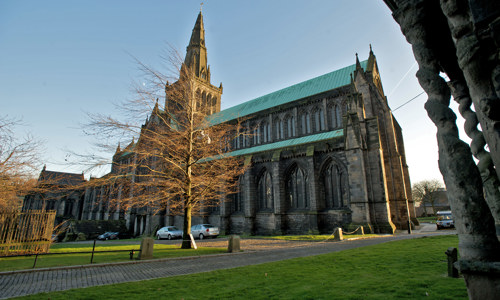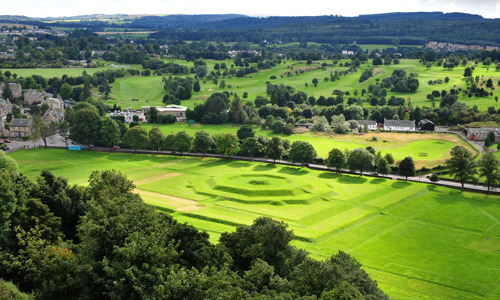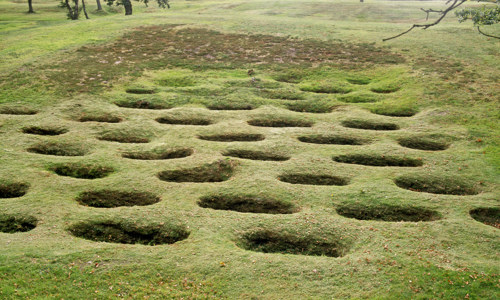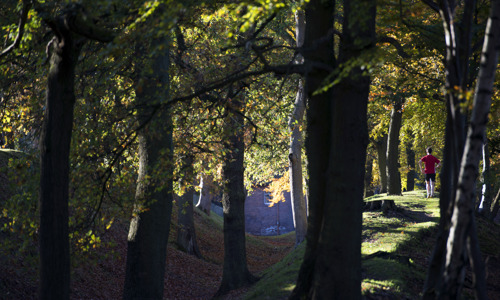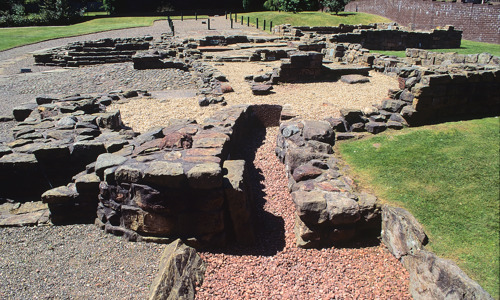History
A Roman treasure trove
Numerous items have been found at Bar Hill, helping us to understand what life would have been like on the Roman frontier. Many of these items were found at the bottom of the fort’s well, and were probably thrown down there when the fort was abandoned. Found artefacts include:
- shoes from men, women and children
- an altar
- building columns
- wooden beams
- part of the pulley of the well
- coins
Take a step back
Unusually among forts along the Antonine Wall, Bar Hill Fort is not situated on the wall itself. Instead, it’s set about 30 metres south of the wall, with the Military Way road running between.
Within the fort are traces of an earlier enclosure, probably a temporary camp set up during the construction of the wall. A second probable temporary camp has also been found just south-west of the fort.
Frontier of an empire
The Antonine Wall was the Roman Empire’s north-western frontier. Built on the orders of Emperor Antoninus Pius in the years following AD 140, it ran for 37 miles (60km) across Scotland’s central belt, from modern Bo’ness on the Firth of Forth to Old Kilpatrick on the River Clyde.
Rather than a stone wall, the Antonine Wall consisted of a turf rampart 3–4m high on a stone base, possibly topped with a timber palisade. It was fronted by a wide and deep ditch, much of which is still visible today. Forts along the wall provided accommodation for the troops and acted as secure crossing points. All forts were linked by a road called the Military Way, which ran behind the rampart.
When it was completed, the Antonine Wall was the most complex frontier ever built by the Roman Army. It was the Romans’ last linear frontier, and was only occupied for about 20 years before it was abandoned in the AD 160s.


